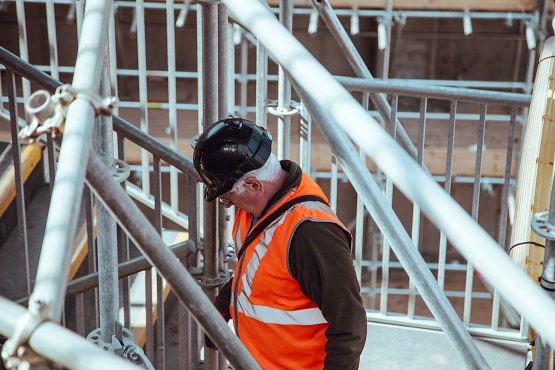Upcoming Building Regulations: how they’re already changing behaviour in our sector

Adam May, Commercial Director, Wolseley Infrastructure
As the UK continues to transition towards becoming a more climate-friendly country with net zero carbon emissions, the way that homes and public buildings are heated is evolving too. New Building Regulations will help to enforce that change, and are themselves already beginning to impact the way that the trade installs heating systems.
The new regulations are part of a wider UK Government effort to tackle climate change, and with 40 per cent of the UK's total energy expenditure coming from heating homes, it is easy to see the link between emissions, climate change and the UK housing sector. It is a transition underway in many countries, but faces particular challenges in the UK, where our housing stock has long suffered from relatively poor insulation.
As the sector works towards meeting the compliance deadlines surrounding the types of heating system that will be permitted in the future, we are already beginning to see the side-effects around how products are procured and how installation projects are managed - particularly the larger and more complex ones.
Yet the trade needs help to understand how the changes will need to be applied in practice, over and above the documentation we have seen from the Government. In April, the Federation of Master Builders (FMB) warned that builders are in need of urgent, clear guidance to help them understand the new changes. 52 per cent were not yet prepared or aware of them, according to the FMB's State of Trade Survey.
These changes to Building Regulations to reduce carbon emissions were first introduced in 2021, targeted at improving domestic energy efficiency. As they continue to take effect, more and more homeowners and property builders are having to become familiar with them as they make heating choices, and they are increasingly having to turn to the expertise of trade professionals to ensure compliance with this new, more stringent regulation.
As of June 2022, all new homes must produce 31 per cent less carbon dioxide emissions than current standards. A grace period for buildings already in the planning process will be in place until next June. These changes are an intermediate measure before the introduction of Future Homes and Buildings Standards in 2025, which will introduce even stricter regulations - and given the economic turbulence and related concerns for the construction sector, there will doubtless be a shift in project priorities and a rush to complete certain works within those deadlines. It will be a logistical, resourcing and financial juggling act for developers.
There are various ways that the new rules will have an impact. Firstly, anyone undertaking home improvement, an extension or a self-build project will be subject to Building Regulation Part L (Conservation of Fuel and Power), which will mandate more stringent on-site audits to confirm that design details are well-applied in construction, with photographs as evidence. These changes will largely impact project management by requiring more paperwork and approval, and trade professionals undertaking such work are already having to consider how they work towards compliance.
Minimum new fabric efficiency standards will also now apply for existing homeowners looking to replace thermal ‘elements’ such as windows and doors. They must consider new rules around glazing, light design and flow temperatures in central heating systems, for example.
With these being the most substantial Building Regulation changes in recent decades, it will obviously take time for the building and heating trades - and homeowners - to get to grips with them. But beyond which products must be used in the future, the change is already being felt most acutely in how projects are planned and how materials are purchased.
There are new compliance considerations in so many aspects that planning is needing to become far more comprehensive, and some purchasing decisions are needing to be made far further in advance. And across those considerations, there is going to be a need for trade professionals, both project managers and installers, to work more closely with trade retailers to ensure all stipulations are addressed. In short, the technical and legislative expertise of retailers will have to come to the fore.
There are other Building Regulations that compound this need. Part F (Ventilation) came into force this summer, and unless pre-approved projects get underway before next June, they will have to comply with tough new measures aimed at assuring interior air quality. Part O (Overheating) presents similar challenges across heating and cooling systems, particularly where buildings are mixed-use.
Building Regulations have always evolved over the years, but these latest changes are significant and require a complex and comprehensive response from the building trades, trade specialists will need to continue to step up to provide the expertise and solutions required. Wolseley’s experts and specialist brands will always aim to keep informed of every change that impacts Building Regulations so that we can advise customers how to meet them, and whilst these developments are extensive, this is no different. We have already seen the purchasing behaviour of some customers begin to alter as they prepare for the changes, and are committed to working closely with all customers as the sector embraces what will undoubtedly be a significant shift for us all.
